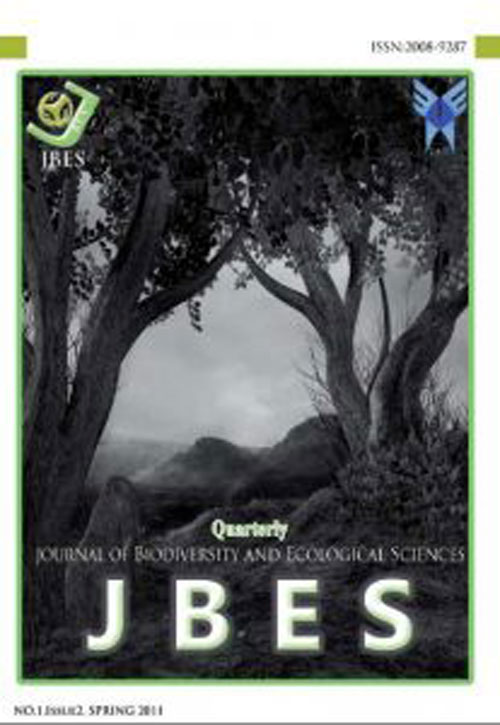Microbial community structures of degraded and undegraded humid tropical forest soils as measured by phospholipid fatty acid [PLFA] profiles
Author(s):
Abstract:
Phospholipid fatty acid [PLFA] profile analysis was used as culture-independent biochemical technique for measurement of microbial community structures in a degraded [seven year old shifting cultivated fallow] and a moderately degraded [selectively logged forest] site as compared to an undegraded natural forest stand at two soil depths. There was no significant variation in total PLFA contents of the three study sites at surface soil layer though the subsurface soil layer displayed significant variation among the soil samples. Altogether 133 fatty acids of ester-linked [EL-PLFA] and non-ester-linked [NEL-PLFA] phospholipid fatty acids were recorded from all soil samples under investigation.Saturated phospholipid fatty acid fraction was the largest EL-PLFA fraction interms of their contribution to total PLFA content in all soil samples while the hydroxy substituted phospholipid fatty acid fraction formed maximum number of 57 fatty acids. The hydroxy substituted unsaponifiable fatty acid [NEL-PLFA] fraction was smallest subgroup of PLFA with only two fatty acids recorded from all the sites except the surface layer of degraded site. Two unusual PLFAs [10- 15:0 and 15:1, 4] were recorded in the present study with different distribution pattern among the soil samples. The fungal biomarker [18:2, c6] was recorded only from the surface layers of the three study sites but these fatty acids were not detected in any of the subsurface soil samples. Microbial community structures of the soil as measured by selective PLFA biomarkers revealed that fungal and bacterial communities are dominant in the surface soil layer. The actinomycetescommunity exhibited as a sensitive microbial group with clear variation in distribution of their biomass among the three soil samples at surface soil layer. The surface layer of the selectively logged forest site with continuous timber extraction, forest floor clearing and burning caused significant decline in the biomass content of this microbial group as compared to the undegraded forest stand. The present study demonstrated the successful application of PLFA profile analysis as a bias-free and culture independent biochemical approach for measuring microbial community structures of degraded and undegraded tropical forest soils.
Language:
English
Published:
Journal of Biodiversity and Ecological Sciences, Volume:1 Issue: 3, 2011
Page:
197
magiran.com/p956197
دانلود و مطالعه متن این مقاله با یکی از روشهای زیر امکان پذیر است:
اشتراک شخصی
با عضویت و پرداخت آنلاین حق اشتراک یکساله به مبلغ 1,390,000ريال میتوانید 70 عنوان مطلب دانلود کنید!
اشتراک سازمانی
به کتابخانه دانشگاه یا محل کار خود پیشنهاد کنید تا اشتراک سازمانی این پایگاه را برای دسترسی نامحدود همه کاربران به متن مطالب تهیه نمایند!
توجه!
- حق عضویت دریافتی صرف حمایت از نشریات عضو و نگهداری، تکمیل و توسعه مگیران میشود.
- پرداخت حق اشتراک و دانلود مقالات اجازه بازنشر آن در سایر رسانههای چاپی و دیجیتال را به کاربر نمیدهد.
In order to view content subscription is required
Personal subscription
Subscribe magiran.com for 70 € euros via PayPal and download 70 articles during a year.
Organization subscription
Please contact us to subscribe your university or library for unlimited access!


